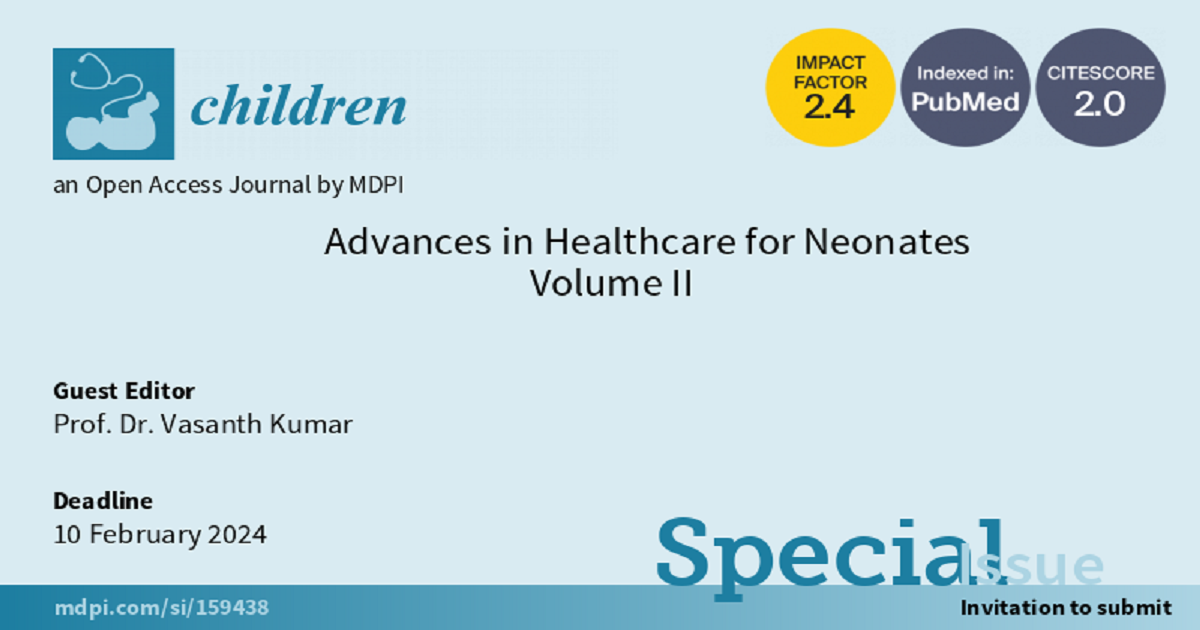Advances in Healthcare for Neonates Volume II
A special issue of Children (ISSN 2227-9067). This special issue belongs to the section "Pediatric Neonatology".
Deadline for manuscript submissions: closed (10 February 2024) | Viewed by 18945

Special Issue Editor
Interests: biomedical engineering; developmental lung biology; global health; lung inflammation and infection; bronchopulmonary dysplasia; brain injury; neonatal resuscitation
Special Issues, Collections and Topics in MDPI journals
Special Issue Information
Dear Colleagues,
Significant advances in neonatology with the discovery of surfactant, inhaled nitric oxide, ventilation management strategies, and the development of whole-body cooling have contributed to substantial improvements in survival and reduced morbidity in premature newborns. In addition, ongoing incremental changes in practices, such as gentle ventilation strategies, the importance of breastfeeding, neurodevelopment care, and quality assurance projects, have contributed to lower morbidity and improved quality of life in these fragile newborns. Therefore, this Special Issue, titled Advances in Healthcare for Neonates, will welcome articles in all fields of neonatal or perinatal medicine from across the globe, with a specific focus on the management and development of infants.
Prof. Dr. Vasanth Kumar
Guest Editor
Manuscript Submission Information
Manuscripts should be submitted online at www.mdpi.com by registering and logging in to this website. Once you are registered, click here to go to the submission form. Manuscripts can be submitted until the deadline. All submissions that pass pre-check are peer-reviewed. Accepted papers will be published continuously in the journal (as soon as accepted) and will be listed together on the special issue website. Research articles, review articles as well as short communications are invited. For planned papers, a title and short abstract (about 100 words) can be sent to the Editorial Office for announcement on this website.
Submitted manuscripts should not have been published previously, nor be under consideration for publication elsewhere (except conference proceedings papers). All manuscripts are thoroughly refereed through a single-blind peer-review process. A guide for authors and other relevant information for submission of manuscripts is available on the Instructions for Authors page. Children is an international peer-reviewed open access monthly journal published by MDPI.
Please visit the Instructions for Authors page before submitting a manuscript. The Article Processing Charge (APC) for publication in this open access journal is 2400 CHF (Swiss Francs). Submitted papers should be well formatted and use good English. Authors may use MDPI's English editing service prior to publication or during author revisions.
Keywords
- morbidity and mortality
- newborns
- bronchopulmonary dysplasia
- brain injury
- growth
- neurodevelopmental outcomes
- clinical outcomes
- quality assurance






